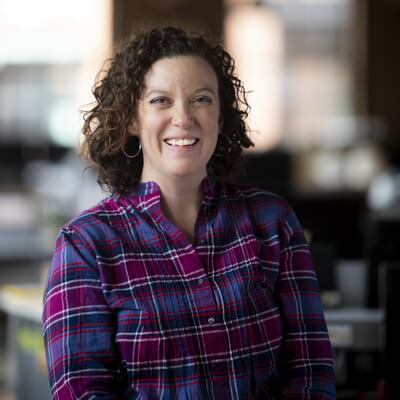While relocating files in our archives recently, we became sidetracked by a set of Time and Motion study drawings done by Frederick Markus, a founding partner of the firm that would one day become PAYETTE. We couldn’t help but look at these through the lens of a recent presentation about new planning tools developed by our Space Strategies group. These hand drawn studies preserved in archival sleeves stirred comparisons to the way we capture this information now – while vastly different, the reasons we do so are the same.
Time and motion studies are efficiency and planning tools, based on techniques developed by Fredrick Winslow Taylor and Frank and Lillian Gilbreth. The basic premise is to closely observe, document and systematically analyze human activity in order to find opportunities to make tasks more efficient, saving time and sometimes resources. It also involves the human element, psychology, to find preferences that might affect activity. Fun fact – two of the Gilbreth’s twelve children wrote the book “Cheaper by the Dozen,” a reflection of how their father utilized his business model to keep his large family running efficiently.
The founders of our firm, Frederick Markus and Paul Nocka, were practicing architecture in an age when the effects of World War II; rationing and the desire for a better economic future; set the stage for the prevalence of efficiency studies in almost every industry. Documents found in our archives note that “Markus was deeply inquisitive in all matters, but especially as to how he could make all aspects of planning, and even the planning of planning, more efficient.” Markus and Nocka began conducting time and motion studies in hospitals at an unprecedented level. This led to numerous publications in hospital literature and had a profound and lasting effect on every aspect of hospital design. The layout of radiology suites were designed to minimize walking distance of workers and patients. Food service was altered so that food was assembled on trays on a conveyor belt at a central location, instead of bulk cooked food being delivered to each wing and being assembled there.
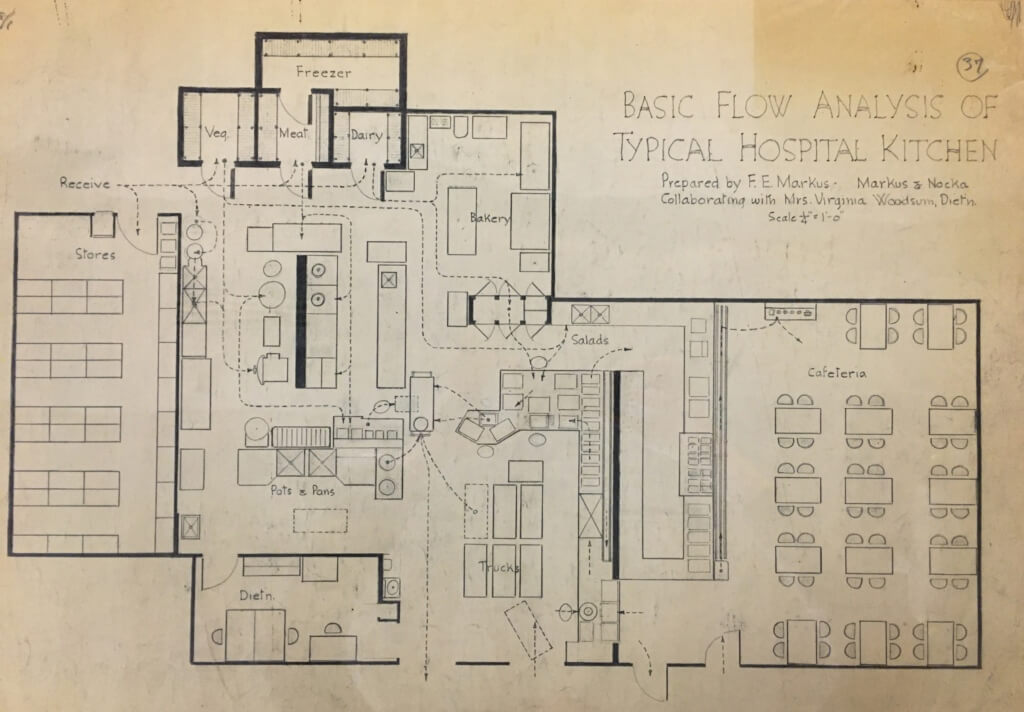
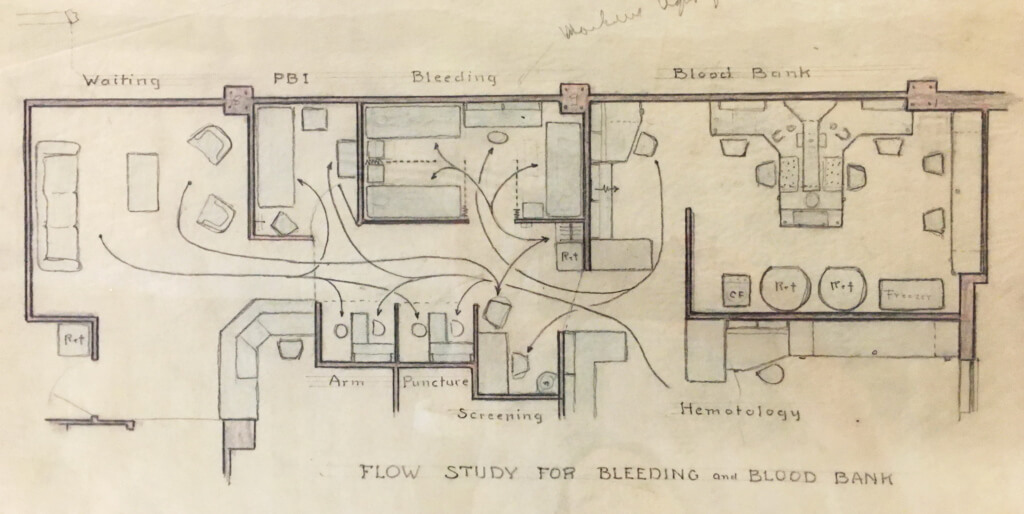
Motion Studies: Hospital Kitchen Food Service (above) Blood Bank (below)
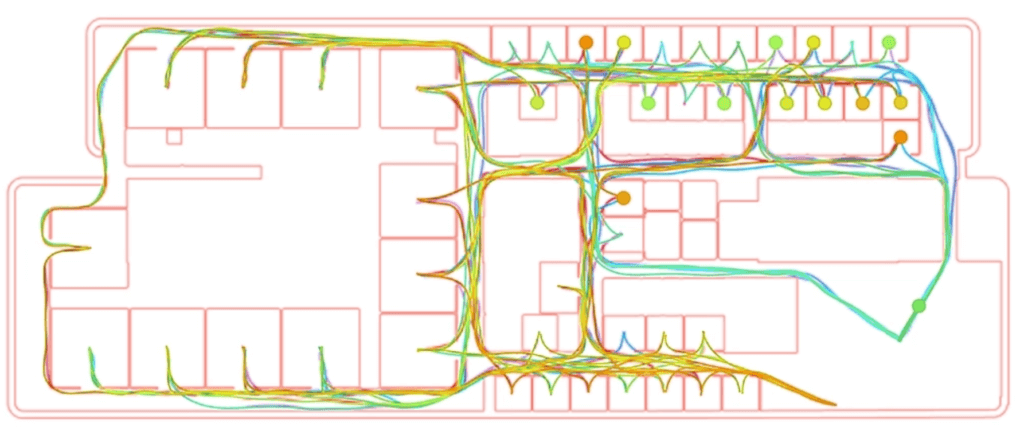
Pedestrian Patterns
The planning tools developed and utilized by PAYETTE today are very different from those early Time and Motion studies, yet they have an air of familiarity about them. Although now we do not study “efficiency” per say, the overarching desire for data and information are the same. Today, these studies have greater emphasis on understanding dynamic relationships between people and space. Not just how people use space, but how they feel about space. The magnitude and type of data we can gather using modern technology has the potential to be overwhelming; and without effective tools and intellect that allow us to synthesize and extract meaning from data, it can easily become paralyzing or even unusable.
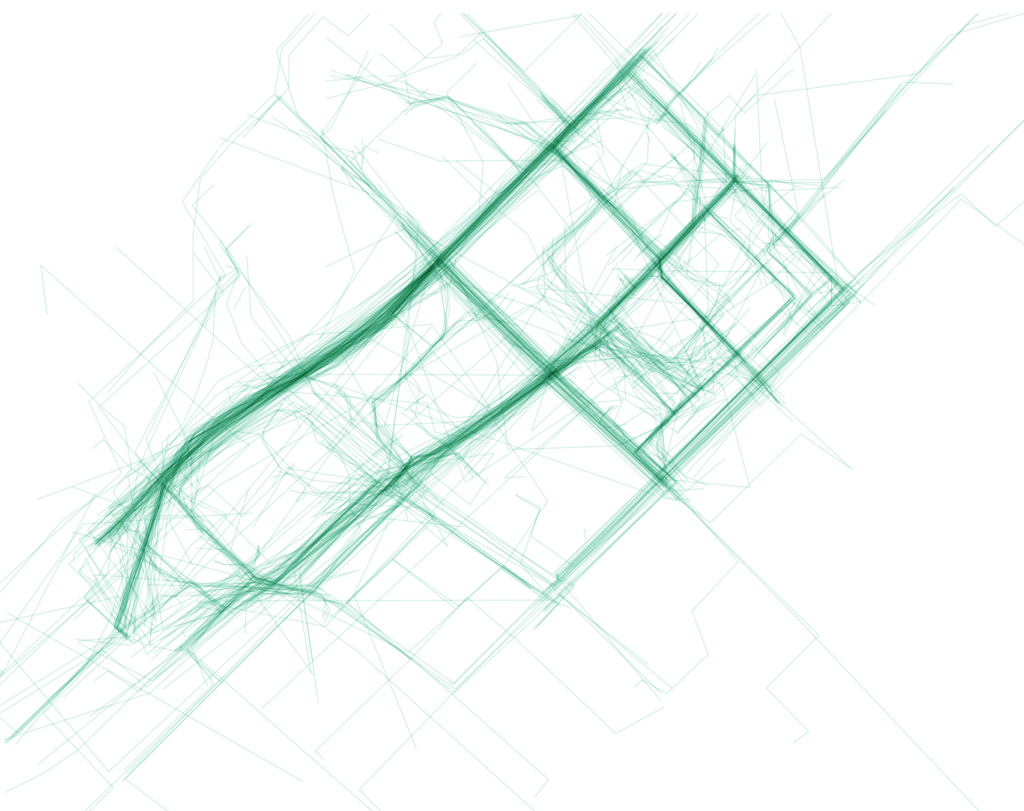
Pedestrian Paths across Campus
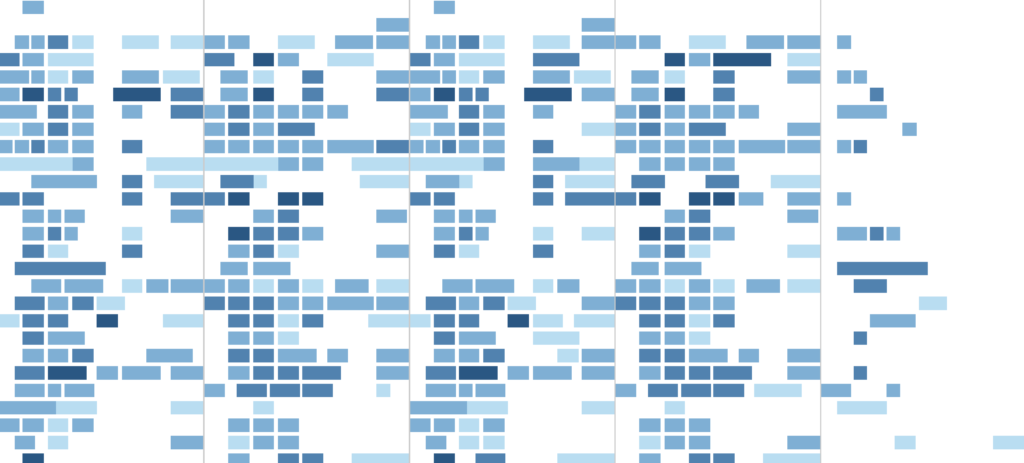
Classroom Occupancy and Schedule
At PAYETTE, we are constantly inventing new tools and methodologies to gather and visualize data about people, time and space. Our web-based surveys are tailored to work on phones, tablets and desktops making them interactive and easy to use. These tools garner high participation levels and allow us to collect significant graphic and numeric data from multiple constituents. We can study the results of these surveys and studies in aggregate, simultaneously, in order to see relationships and patterns whose connections may not be obvious. Like the Time and Motion Studies of the past, these tools aid design by establishing adjacencies, workflow and process. For example, our Pulse tool can quickly determine bottlenecks or congestion along pedestrian routes; frequency of use for equipment, storage and patient care spaces; and the technical limitations of space or equipment. Unlike studies of the past, Pulse can crowd source ideas and insights, and highlight missing capabilities or limitations of a design. Surveys and studies that used to take weeks or even months to complete and process can now be visualized in real-time, enabling quick and efficient turnaround and analysis

Chord Diagram of Building Relationships
While the tools we use to gather and track data have changed, our roots can be seen in how we practice planning today. Like Markus’ Time and Motion Studies, today’s tools inform and enhance decision-making, establishing clear strategies from the big picture such as master plans all the way down to granular project decisions, linking analysis to design solutions.

